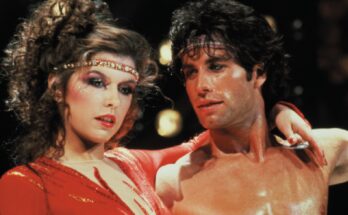No Place to Hide (1973)
“No Place to Hide” (1973) is one of Sylvester Stallone’s earliest leading roles, a political thriller that blends mystery, suspense, and social commentary. Directed by Robert Allen Schnitzer, the film offers a glimpse into the turbulent political climate of the early 1970s, touching on themes of protest, paranoia, and idealism gone astray. Although relatively unknown compared to Stallone’s later hits, it provides an intriguing look at his early dramatic work before Rocky (1976) made him a star.
The story follows Jerry Savage (played by Sylvester Stallone), a young idealist and political activist in New York City during the height of anti-establishment sentiment in America. Jerry is disillusioned with government corruption, social inequality, and the Vietnam War. Like many youth of his generation, he wants to make a difference—but his methods begin to drift into dangerous territory.

Jerry belongs to a small radical group of underground activists planning to draw public attention to what they see as America’s moral decay. Their leader, Laurie (Rebecca Grimes), is fiercely passionate and pushes the group toward direct, violent action. They believe that only through shock and disruption can society wake up to injustice. Though Jerry initially supports their cause, he grows increasingly uneasy with the group’s willingness to sacrifice innocent lives for ideology.
As the film unfolds, Jerry finds himself torn between loyalty to his comrades and his growing moral conscience. The group’s plans escalate from peaceful demonstrations to bombing a corporate office building they believe symbolizes capitalist oppression. Jerry’s hesitation and doubts put him at odds with Laurie and the others, who see his uncertainty as betrayal.
When one of the group’s operations goes wrong, the FBI begins closing in. Jerry becomes the target of both law enforcement and his own former allies, who now see him as a liability. Realizing he’s been manipulated by people who care more about chaos than justice, Jerry flees through the city — hunted, confused, and desperate to find redemption.
Throughout the chase, the film uses flashbacks and internal monologues to explore Jerry’s inner turmoil. He recalls his childhood, lost love, and the moment he first believed he could change the world. These reflections highlight his humanity and the tragedy of youthful rebellion consumed by extremism.
In the final act, Jerry is cornered by the authorities. Despite his desire to surrender and tell the truth, his past actions have made him a symbol of violence in the public eye. The movie ends ambiguously, with Jerry’s fate left uncertain — a haunting conclusion that reflects the disillusionment and moral confusion of the era.
While No Place to Hide is a low-budget film with a raw, almost documentary style, it remains notable for its ambition and political relevance. It captures the discontent of a generation questioning authority and the price of radical idealism.
For Stallone, this early role revealed flashes of the intensity and emotional depth that would later define his iconic characters — from the vulnerable boxer Rocky Balboa to the haunted soldier John Rambo. Though not a commercial success, “No Place to Hide” stands as an important milestone in his journey from struggling actor to Hollywood legend.



